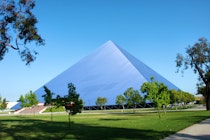Add a college to compare up to four schools
Frequently compared to these colleges. Click a college to add to the comparison.
California State Polytechnic University-Pomona San Jose State Cal State Fullerton San Diego State San Francisco State California State University-Northridge UCLA California State University-Fresno UCSC UC Riverside Cal State LA UCI| California State University Long Beach | Thomas Aquinas College | College 3 | College 4 | |
|---|---|---|---|---|
 |
 |
|||
| Remove | Remove | +Add | +Add | |
Overview |
Cal State Long Beach | Thomas Aquinas College | ||
| Location | Long Beach, CA | Santa Paula, CA | ||
| Setting | Large City | Distant Rural | ||
| Enrollment | 38,973 | 516 | ||
| Type | Public 4 Year | Private 4 Year | ||
| National Ranking | #507 | |||
| Religious Affiliation | - | Roman Catholic | - | - |
| Status | Non-profit | Non-profit | ||
| Website | csulb.edu | thomasaquinas.edu | ||
| Team Colors |
Costs |
Cal State Long Beach | Thomas Aquinas College | ||
| Tuition (In State) | $5,742 | $27,000 | ||
|---|---|---|---|---|
| Tuition (Out of State) | $17,622 | $27,000 | ||
| Room & Board | $14,932 | $9,900 | ||
| Avg Net Price | $9,346 | $24,217 | ||
| Avg Grant Aid | $9,478 | $14,211 | ||
| % Receiving Grant Aid | 75% | 57% |
Admission |
Cal State Long Beach | Thomas Aquinas College | ||
|---|---|---|---|---|
| Admission Chances | Calculate | Calculate | ||
| Applied | 74,718 | 262 | ||
| Admitted | 29,851 | 222 | ||
| Acceptance Rate | 40% | 84.7% | ||
| Enrolled % | 18% | 62.6% | ||
| Avg High School GPA | 3.7 | 3.8 | ||
| Typical High School Grades | A- | A- | ||
| Admissions Standards | Average | Very High | ||
| Applicant Competition | Low | |||
| ACT Range | 20/26 | 27/32 | ||
| SAT Range | 1020/1240 | 1220/1410 | ||
| Submit Test Scores | Not considered for admission, even if submitted (Test Blind) | Required to be considered for admission | ||
| Application Deadline | Nov 30, 2023 |
Academics |
Cal State Long Beach | Thomas Aquinas College | ||
|---|---|---|---|---|
| Student to Faculty Ratio | 22:1 | 11:1 | ||
| Popular Majors |
|
|
||
Outcomes |
Cal State Long Beach | Thomas Aquinas College | ||
| Graduation Rate | 54% | 69% | ||
| Median Earnings (After 10 years) | $51,100 | $45,700 | ||
| Making Student Loan Payments | 69% | 90% | ||
| Median Student Loan Debt | $15,000 | $17,000 | ||
| Median Loan Payment | $155 | $175 |
Diversity |
Cal State Long Beach | Thomas Aquinas College | ||
|---|---|---|---|---|
| % Men | 41% | 48% | ||
| % Women | 59% | 52% | ||
| Racial Diversity | Very High | Medium | ||
| HBCU | No | No | ||
| % White | 19% | 70% | ||
| % Black | 4% | 0% | ||
| % Hispanic | 39% | 15% | ||
| % Native American | 0% | 0% | ||
| % Pacific Islander | 0% | 0% | ||
| % Two or More Races | 5% | 7% | ||
| % International | 6% | 3% | ||
| % Unknown Race | 4% | 3% |
Students |
Cal State Long Beach | Thomas Aquinas College | ||
|---|---|---|---|---|
| % In-State | 97% | 32% | ||
| % Out-of-State | 2% | 63% | ||
Campus |
Cal State Long Beach | Thomas Aquinas College | ||
| Campus Housing | Yes | Yes | ||
| Freshman Dorm Required | No | No | ||
| Meal Plan | Yes | Yes | ||
| Weekend/Evening Classes | No | No | ||
| Daycare Facility | Yes | No | ||
| Learn More | Details | Details |
Comparable Facts
- California State University Long Beach is larger than than Thomas Aquinas College based on total student enrollment (38,973 students vs. 516 students)
Cal State Long Beach vs. Thomas Aquinas College Cost Comparison
Which college is more expensive, Cal State Long Beach or Thomas Aquinas College?
- Thomas Aquinas College is 370.2% more expensive to attend than Cal State Long Beach for in-state tuition ($27,000.00 vs. $5,742.00)
- Out of state tuition is 53.2% higher at Thomas Aquinas College than California State University Long Beach ($27,000.00 vs. $17,622.00)
- The typical actual cost that students pay to attend (average net price) is less at California State University Long Beach than Thomas Aquinas College ($9,346 vs. $24,217)
- Living costs (room and board or off-campus housing budget) at Thomas Aquinas College are 50.8% lower than costs at California State University Long Beach ($9,900 vs. $14,932)
- More students receive financial grant aid at California State University Long Beach than Thomas Aquinas College (75% vs. 57%)
- The average total grant financial aid received by Thomas Aquinas College students is 49.9% larger than aid received California State University Long Beach ($14,211 vs. $9,478)
Cal State Long Beach vs. Thomas Aquinas College Admissions Difficulty Comparison
Which college is harder to get into, Cal State Long Beach or Thomas Aquinas College? Average SAT and ACT scores plus acceptance rates offer good insight into the difficulty of admission between Thomas Aquinas College or Cal State Long Beach .
- The average SAT score at Thomas Aquinas College (1280) is 224 points higher than at Cal State Long Beach (1056)
- Incoming Thomas Aquinas College students have a 7 point higher average ACT score (30) than students at Cal State Long Beach (23)
- Accepted freshman Thomas Aquinas College students have a 0.1 point higher average high school GPA (3.8) than students at Cal State Long Beach (3.7)
- Thomas Aquinas College has a higher acceptance rate (84.7%) than Cal State Long Beach (40%)
Cal State Long Beach vs. Thomas Aquinas College Graduation Outcomes Comparison
Which is better, Cal State Long Beach or Thomas Aquinas College? Graduation rate, salary and amount of student loan debt are indicators of a college which offers better outcomes for its graduates. Compare the following outcomes facts between Thomas Aquinas College and Cal State Long Beach.
- The graduation rate at Thomas Aquinas College is higher than California State University Long Beach (69% vs. 54%)
- Graduates from California State University Long Beach earn on average $5,400 more per year than Thomas Aquinas College graduates after ten years. ($51,100 vs. $45,700)
- California State University Long Beach students graduate with a $2,000 lower median federal student loan debt than Thomas Aquinas College graduates. ($15,000 vs. $17,000)
- Cal State Long Beach graduates are paying $20 less per month on federal student loans than Thomas Aquinas College graduates. ($155 vs. $175)
- More Thomas Aquinas College graduates are actively paying back their federal student loan debt than former Cal State Long Beach students, three years after graduation. (90% vs. 69%)
Sources: U.S. Department of Education https://nces.ed.gov IPEDS and College Scorecard https://collegescorecard.ed.gov/